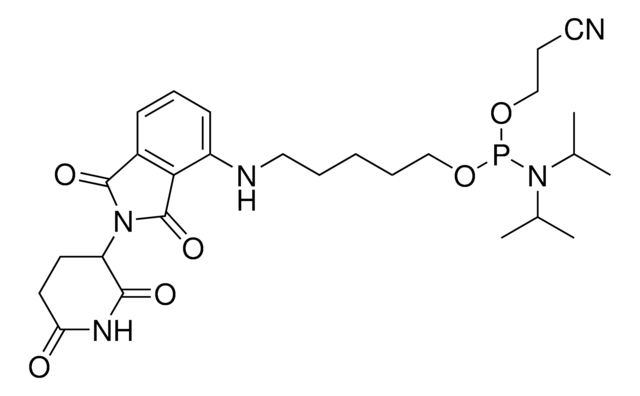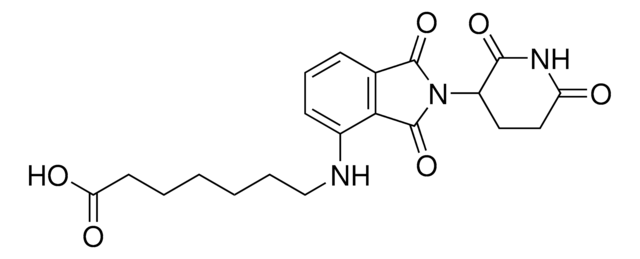929344
(S,R,S)-AHPC-C5-phosphoramidite
Synonym(s):
(3R,5S)-1-((2S)-2-(6-(((2-Cyanoethoxy)(diisopropylamino)phosphaneyl)oxy)hexanamido)-3,3-dimethylbutanoyl)-5-((4-(4-methylthiazol-5-yl)benzyl)carbamoyl)pyrrolidin-3-yl acetate
About This Item
Recommended Products
ligand
VH032
Quality Level
form
solid or liquid
storage temp.
2-8°C
SMILES string
O=C(N1C[C@H](OC(C)=O)C[C@H]1C(NCC2=CC=C(C3=C(C)N=CS3)C=C2)=O)[C@H](C(C)(C)C)NC(CCCCCOP(OCCC#N)N(C(C)C)C(C)C)=O
Related Categories
Application
Technology Spotlight: Degrader Building Blocks for Targeted Protein Degradation
Protein Degrader Building Blocks
Other Notes
Destruction of DNA-Binding Proteins by Programmable Oligonucleotide PROTAC (O′PROTAC): Effective Targeting of LEF1 and ERG
Small-Molecule PROTACS: New Approaches to Protein Degradation
Targeted Protein Degradation: from Chemical Biology to Drug Discovery
Impact of linker length on the activity of PROTACs
Legal Information
Storage Class Code
11 - Combustible Solids
WGK
WGK 3
Flash Point(F)
Not applicable
Flash Point(C)
Not applicable
Certificates of Analysis (COA)
Search for Certificates of Analysis (COA) by entering the products Lot/Batch Number. Lot and Batch Numbers can be found on a product’s label following the words ‘Lot’ or ‘Batch’.
Already Own This Product?
Find documentation for the products that you have recently purchased in the Document Library.
Our team of scientists has experience in all areas of research including Life Science, Material Science, Chemical Synthesis, Chromatography, Analytical and many others.
Contact Technical Service








